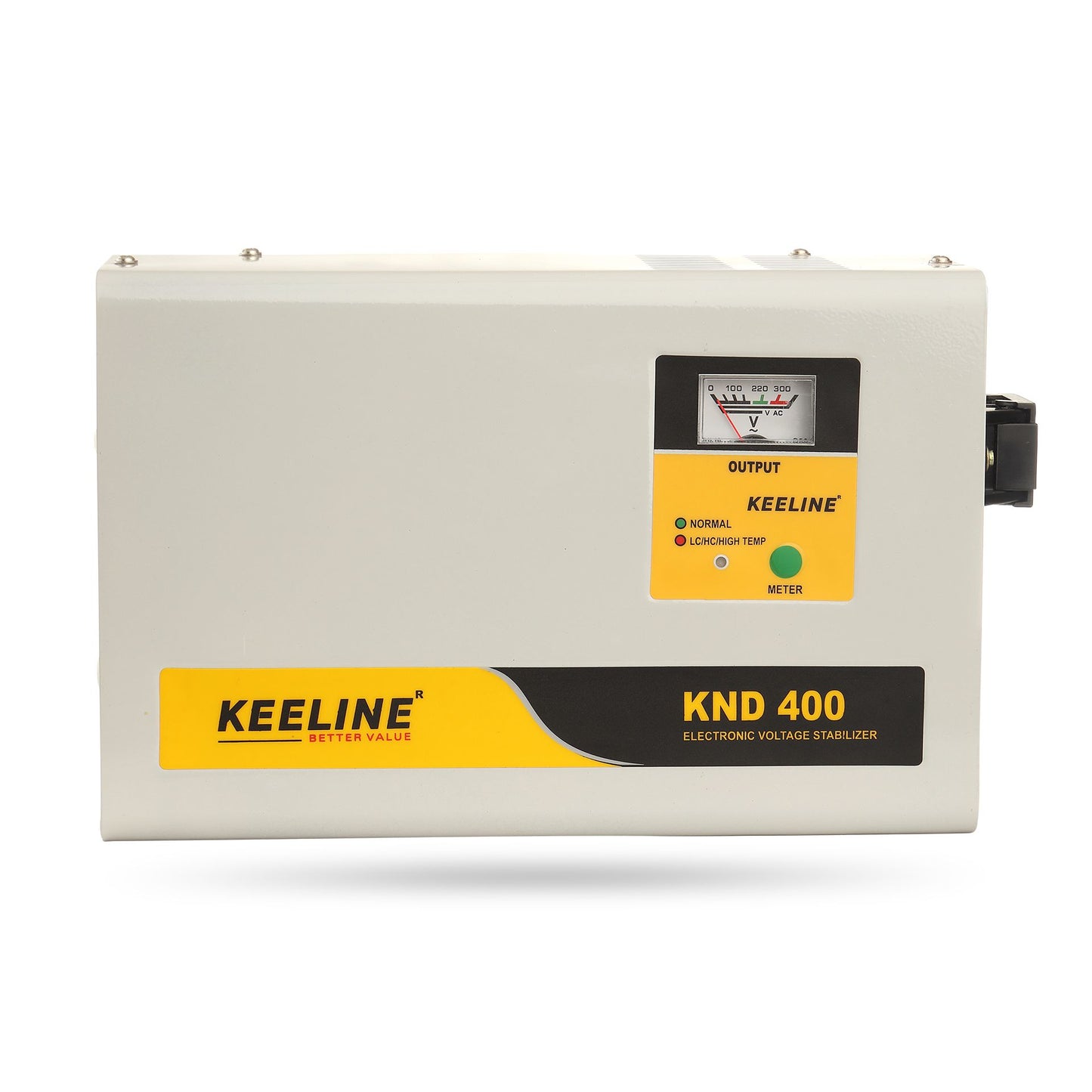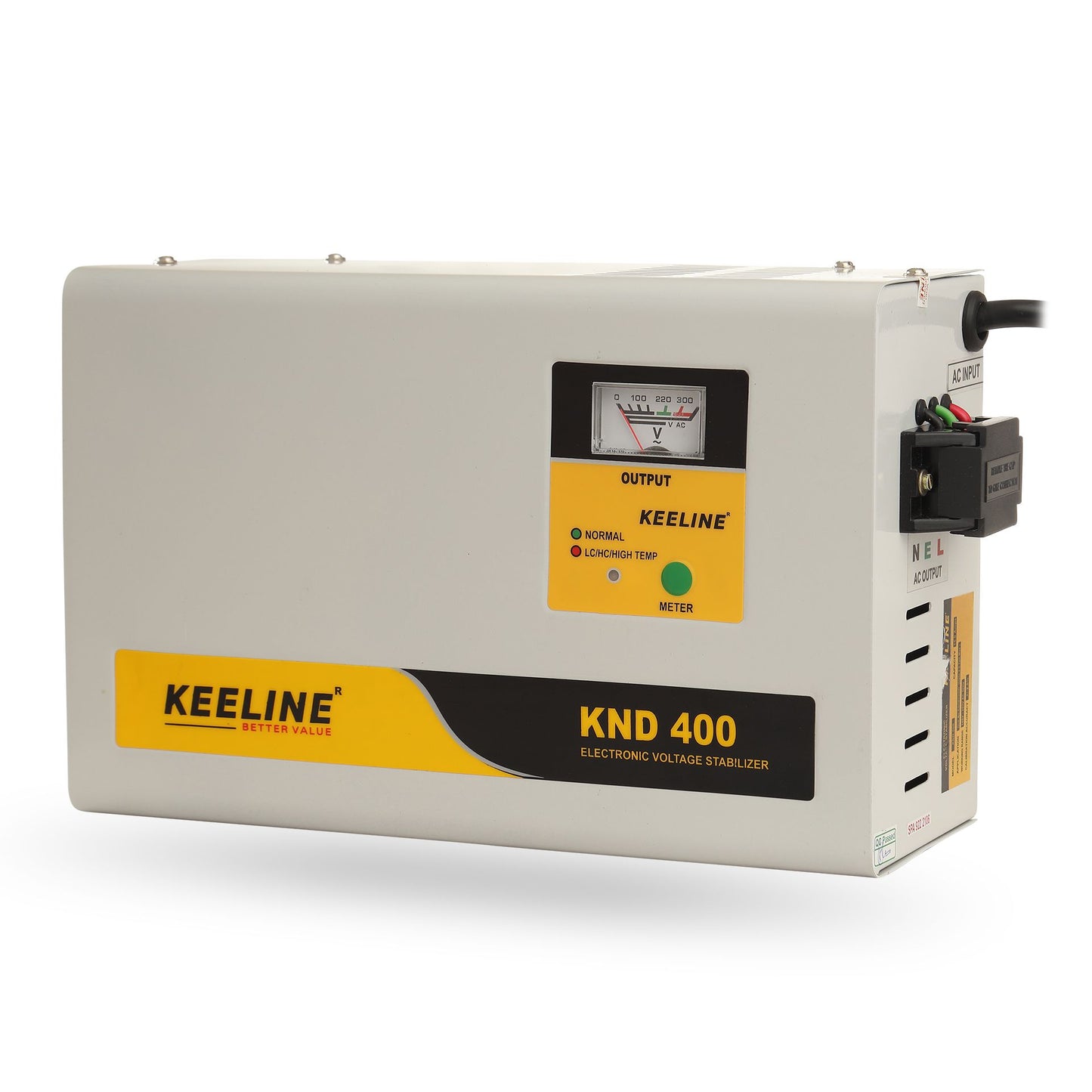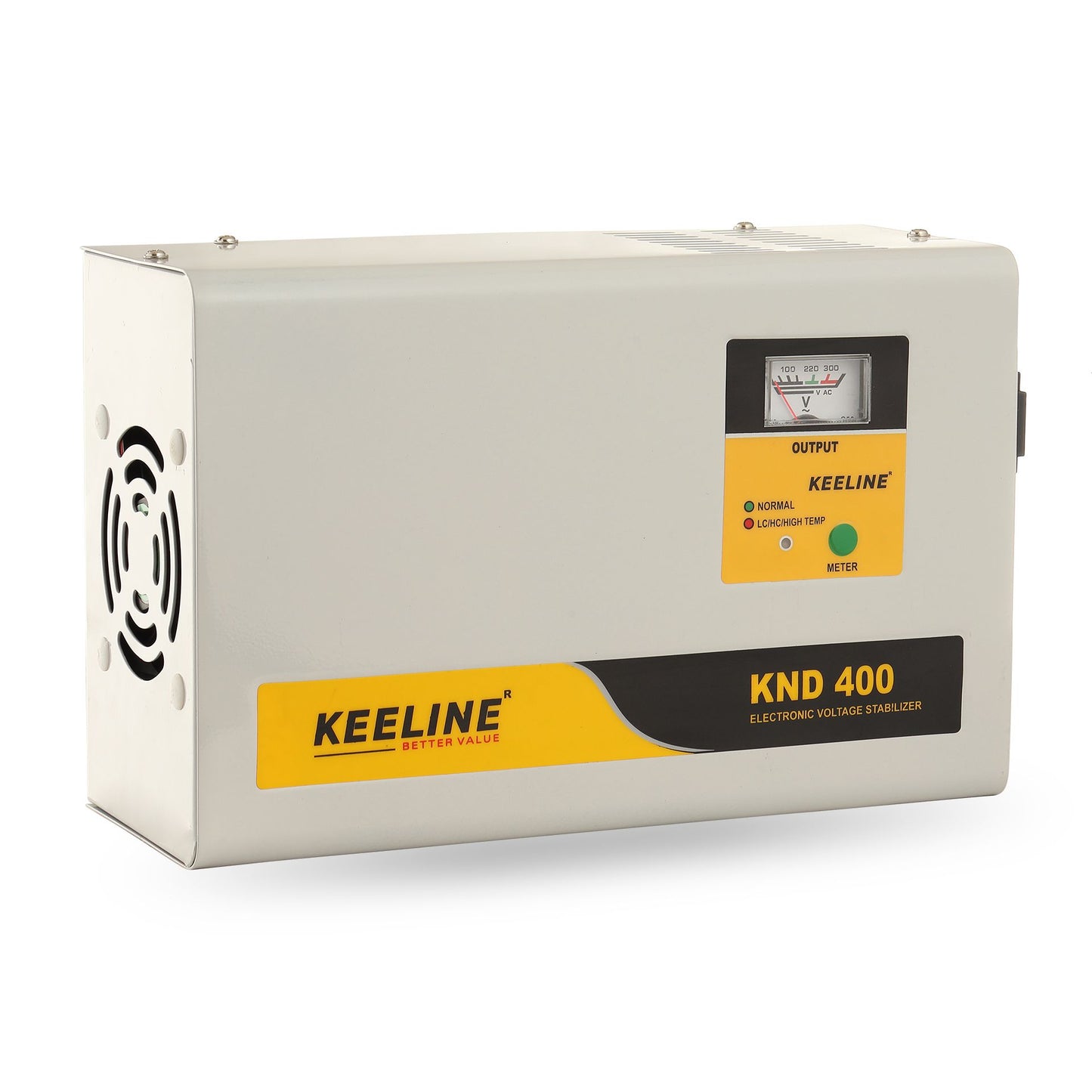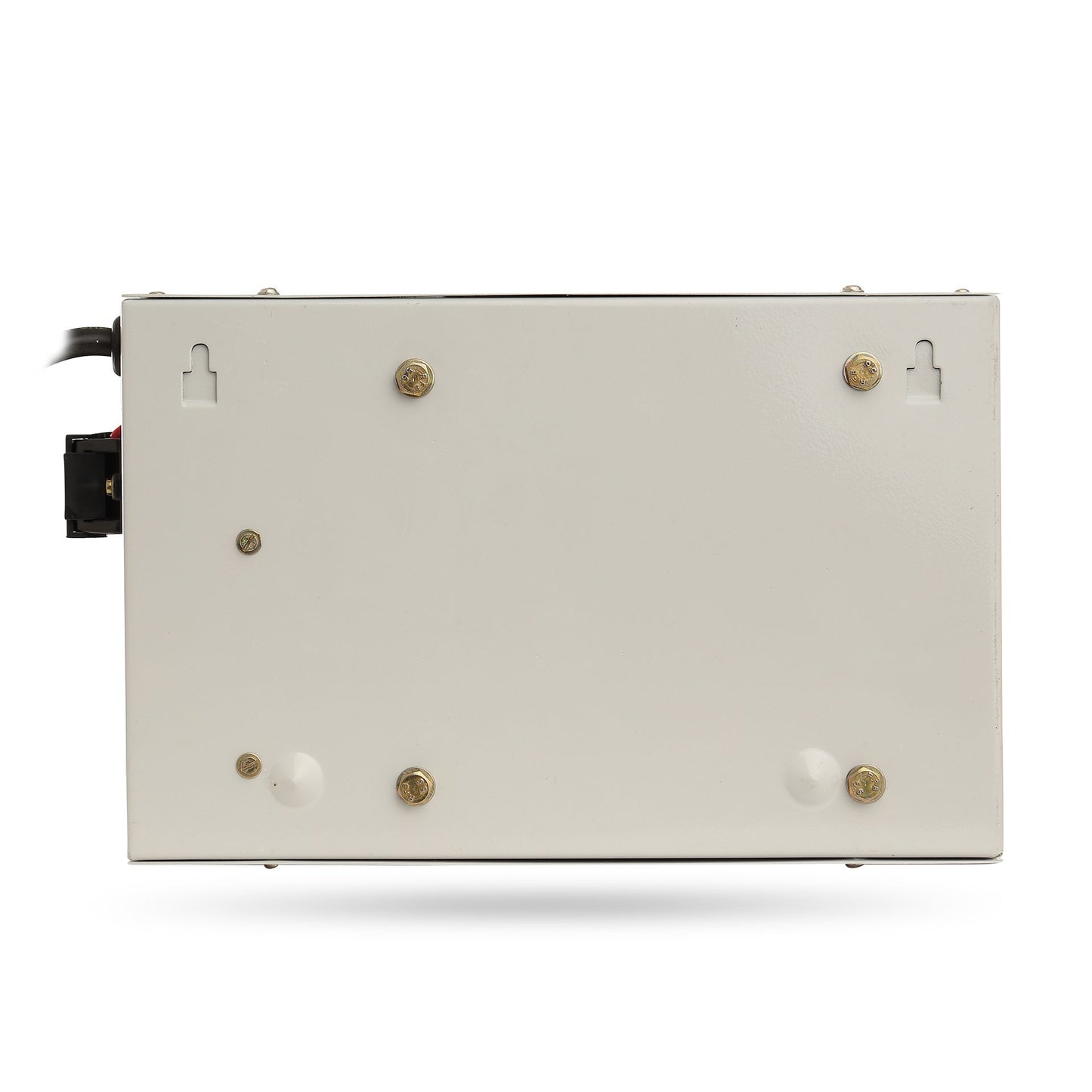KND 400
KND 400
Warranty Period - 3 Years
AIR CONDITIONER ≤ 1.5 TON
Couldn't load pickup availability
Share
Capacity (Ampere):
12.0 A
Application:
AIR CONDITIONER ≤ 1.5 TON
KEELINE® KND-400 - 140 V to 290 V - Stabilizer for Air Conditioners up to 1.5 Ton (Havels Grey)
KND-400 - Stabilizer for Air Conditioner from KEELINE® a trusted brand for Automatic Voltage Stabilizers, designed to work under a wide range of Input Voltage, offers protection from low/high voltage fluctuations by assuring optimum Voltage to your Air Conditioner and ensures efficient functioning. Manufactured with quality components for the durability of the Stabilizer and offers reliable protection to your appliance.
- Color: Havels Grey
- Body Material: Metal
- Mounting Type: Wall Mount.
- Capacity: 12.0 Amps, Working Range: 140 VAC - 290 VAC - ensures the functioning of the appliance under a wide range of input voltage, Working Frequency: 50 Hz, Boosting Range: 30 VAC, Bucking Range: 30 VAC. Advanced IC Controlled Technology, for better correction of Input Voltage during fluctuations - assures reliable protection for connected appliance by ensuring optimum Output Voltage and also durability of stabilizer.
- Automatic High & Low Voltage Cut Off with automatic reset - Protects connected appliance during low and high voltage fluctuations. Efficient Heavy Duty Transformer - regulates Input Voltage fluctuations to deliver a consistent range of Output Voltage, Thermal Overload Protection with Auto Cut-off - turns off the stabilizer output completely in case of a short circuit or any kind of burn-out in case of overload.
- Initial time delay of 4 - 6 Seconds - To ensure optimum Output Voltage to connected appliance. User-friendly display, LED for Input Voltage & Analog Meter for Output Voltage. Heavy Duty Connection Terminals, for long life. Input: 1.2 Mtr. - 3 Core Cable, Output: 30 Amps 3 Way Connector.
- 3 Years Warranty against manufacturing defects.




Frequently asked Questions
What is an electronic voltage stabiliser?
An electronic voltage stabiliser is a device that automatically maintains a steady voltage level to shield electrical appliances from voltage fluctuations. It makes sure that the output voltage stays within a safe range, protecting equipment from harm and extending their lifespan.
How to select a suitable stabiliser for your device?
Selecting the perfect stabiliser for your appliance can prove to be a major task. Here’s a guide to simplify the process. Consider the following points:
- Power Requirements: Check the voltage and power ratings of your device.
- Voltage Fluctuations: Know the range and frequency of voltage fluctuations in your region.
- Type of Stabiliser: Choose between the type of stabilisers based on the criticality of your device.
- Load Capacity: Make sure the stabiliser can handle the total load of all devices connected to it.
- Additional Features: Look for additional features like time delay, overload protection, and digital displays for better performance and protection.
- Brand and Warranty: Opt for reputable brands and check the warranty and after-sales support.
We assure you that Keeline will provide exactly what you’ve been looking for. Our stabilisers ensure optimal performance and protection for your device.
How does a stabiliser protect its device?
Stabilisers safeguard their devices through guaranteeing a uniform voltage output in spite of variations in the input voltage. This ensures the item operates safely and effectively by preventing damage from over-voltage, under-voltage, or surges.
What is time delay and how much is required?
The term "time delay" refers to the deliberate pause that is added to a control system in order to guarantee stability and avoid fluctuations. Due to this delay, the system may react to changes and disturbances more smoothly and prevent over corrections, which can cause instability.The required time delay varies depending on the specific system and its dynamics. In order to guarantee peak performance and stability while striking a balance between fluctuation risk and responsiveness, it is usually established through study and testing.






